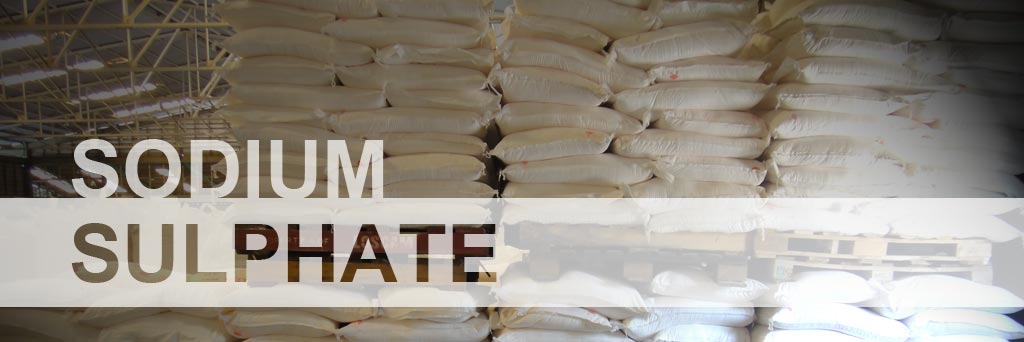Sodium Sulfate or glauber's salt is the sodium salt of sulfuric acid. When anhydrous, it is a white crystalline solid of formula Na2SO4 known as the mineral thenardite. It is mainly used for the manufacture of detergents and in the Kraft process of paper pulping. About two-thirds of the world's production is from mirabilite, the natural mineral form of the decahydrate, and the remainder from by-products of chemical processes such as hydrochloric acid production.
The largest use of Sodium Sulfate is as filler in powdered home laundry detergents.
The glass industry provides another significant application for Sodium Sulfate. It is used as a fining agent, to help remove small air bubbles from molten glass. It fluxes the glass, and prevents scum formation of the glass melt during refining.
Sodium Sulfate is important in the manufacture of textiles. It helps in "levelling", reducing negative charges on fibres so that dyes can penetrate evenly. It does not corrode the stainless steel vessels used in dyeing.
In the laboratory, anhydrous Sodium Sulfate is widely used as an inert drying agent, for removing traces of water from organic solutions.
Other uses for Sodium Sulfate include de-frosting windows, in carpet fresheners, starch manufacture, and as an additive to cattle feed.
Sodium Sulfate has been found effective in dissolving very finely electroplated micrometre gold that is found in gold electroplated hardware on electronic products such as pins, and other connectors and switches. It is safer and cheaper than other reagents used for gold recovery, with little concern for adverse reactions or health effects.
For safety issues, although Sodium Sulfate is generally regarded as non-toxic, it should be handled with care. The dust can cause temporary asthma or eye irritation; this risk can be prevented by using eye protection and a paper mask. |



